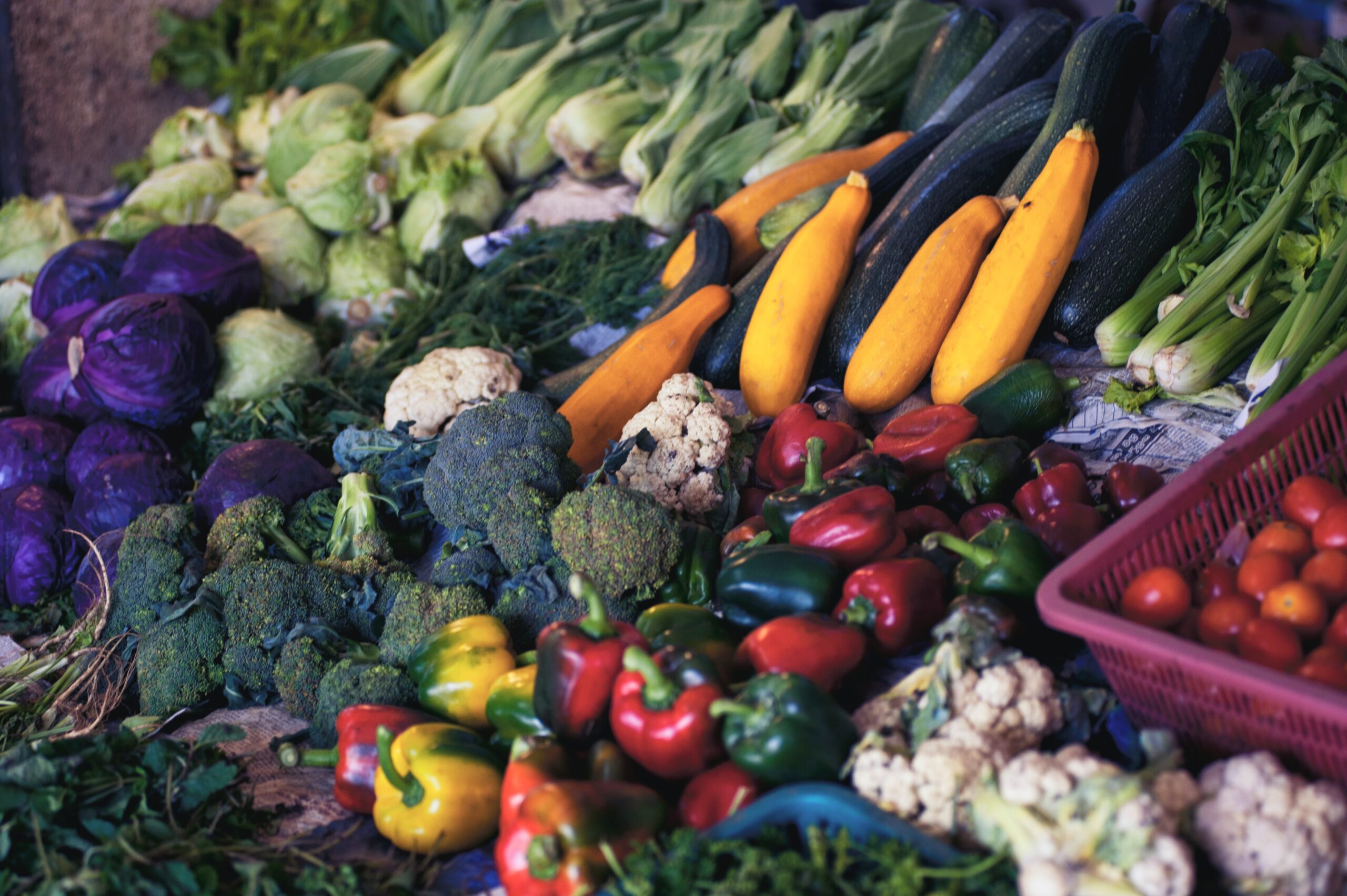
The Benefits of Incorporating Non-Starchy Vegetables into a Diabetic Diet
When talking about a diabetic diet, it’s important to focus on a healthy, balanced diet to help manage your blood sugar levels, if you have diabetes. One of the crucial elements of a diabetic diet is to incorporate non-starchy vegetables. These types of vegetables are lower in carbs and calories, and they provide a range of nutrients and fiber that can benefit overall health.
The American Diabetes Association mentions it very clearly in their publications: “…Eat more! You don’t often hear that when you have diabetes, but non-starchy vegetables are one food group where you can satisfy your appetite.
Vegetables are full of vitamins, minerals, fiber, and phytochemicals—and with so few calories and carbohydrates, everyone can enjoy more!
There are two main types of vegetables—starchy and non-starchy. For this section, we are going to focus only on non-starchy vegetables.
Choosing non-starchy vegetables.
Choose fresh, frozen, and canned vegetables and vegetable juices without added sodium, fat, or sugar.
If using canned or frozen vegetables, look for ones that say no salt added on the label.
As a general rule, frozen or canned vegetables in sauces are higher in both fat and sodium.
If using canned vegetables with sodium, drain the vegetables and rinse them with water to decrease how much sodium is left on the vegetables.
For good health, try to eat at least three to five servings of vegetables a day. This is a minimum and more is better! A serving of vegetables is:
½ cup of cooked vegetables
1 cup of raw vegetables …”
I also invite you to read the following article (From GooDrx) on the benefits of non-starchy vegetables in the diabetic diet “26 Non-Starchy Vegetables Approved for People with Diabetes“
Here are some benefits of incorporating non-starchy vegetables into your diabetic diet:
They help regulate blood sugar. Non-starchy vegetables contain fewer carbs than stiff vegetables, such as potatoes and peas.
This means that they do not cause a rapid rise in blood sugar, which can be beneficial for diabetes management.
They provide a wide range of nutrients.
Non-starchy vegetables are a rich source of vitamins and minerals, including vitamin A, vitamin C, potassium, and folic acid. These nutrients are important for maintaining overall health and can help reduce the risk of complications associated with diabetes.
They are low in calories Non-starchy vegetables are generally low in calories, which can be useful for bodybuilding operations.
Weight control is important for people with diabetes because being overweight can make it more difficult to manage blood sugar.
They’re high in fiber: Non-starchy vegetables are a good source of fiber, which is important for digestive health and blood sugar control. Fiber can help slow the digestion and sinking of carbohydrates, which can help regulate blood sugar.
Some examples of non-starchy vegetables include lush flora, broccoli, cauliflower, peppers, tomatoes, and cucumbers. These vegetables can be incorporated into a variety of dishes, including salads, stir-fries, and mists.
What are some non-starchy vegetables?

When it comes to picking which veggies to add to your diabetic-friendly meals, the following non-starchy vegetables could be some of your go-to’s:
- Arugula
- Artichoke hearts
- Asparagus
- Brussel sprouts
- cabbage
- Cauliflower
- Celery
- Cucumber
- Eggplant
- hearts of palm
- jicama
- kohlrabi
- Leeks
- Mushrooms
- Okra
- Onions
- peppers
- Radishes
- Rutabaga
- spaghetti squash
- Spinach
- sugar snap peas
- Swiss chard
- Tomatoes
- Water chestnuts
- Zucchini
The American Diabetes Association recommends eating 3 to 5 servings of vegetables per day for overall health.
A single serving equals 1 cup of raw vegetables or ½ cup of cooked vegetables. If you have diabetes, a good rule of thumb is to fill up half your plate with non-starchy vegetables.
How to manage blood sugar levels with portion control and balanced meals

Managing blood sugar is an important part of living with diabetes. One way to do this is to pay attention to portion size and frosting so your meals are balanced and nutritious. Then here are some tips for managing blood sugar through portion control and balanced meals:
Measure your portions: It is important to know the importance of the foods you eat in order to manage your blood sugar.
Use measuring cups or a kitchen scale to make sure you don’t binge.
Eat regularly: Skipping meals or going too long without eating can cause your blood sugar levels to drop too low, which can be dangerous.
Try to eat regular, balanced meals and snacks to keep blood sugar stable.
Include proteins and healthy fats: Proteins and healthy fats can help slow the digestion and absorption of carbohydrates, which can help regulate blood sugar.
Try to include sources of protein, similar to meat, flesh, fish, or reserve sap, and healthy fats, similar to avocado, nuts, and oil paint. olive, in your meals and snacks.
Limiting added sugars can cause blood sugar spikes, so it’s important to limit your intake of sticky drinks and sweets. instead, opt for natural sources of convenience, similar to fruit, to satisfy your sweet tooth.
Incorporate non-starchy vegetables: Non-starchy vegetables, similar to lush flora, broccoli, and bell peppers, contain fewer carbs and calories than stiff vegetables, similar to potatoes and slimes.
Incorporating non-starchy vegetables into your meals and snacks can help regulate blood sugar.
By paying attention to portion sizes and frosting to ensure your meals are balanced and nutritious, you can help manage your blood sugar levels and maintain overall good health.
The Part of fiber in a diabetic diet
Fiber is an important nutrient for everyone, and it may be especially beneficial for people with diabetes.
Fiber is a type of carbohydrate that your body cannot digest, so it passes through your body undigested. It can help regulate blood sugar and improve digestive health.
Here are some benefits of incorporating fiber into a diabetic diet:
It can help regulate blood sugar Fiber can help slow the digestion and absorption of carbohydrates, which can help regulate blood sugar. This is especially important for diabetics, as unbridled blood sugar can lead to complications similar to heart problems, damage to an order, and temperamental damage.
It can improve digestive health. Fiber helps keep your digestive system running smoothly and can help with constipation and other digestive issues.
It may help with weight control: Fiber is low in calories and can help you feel full and satisfied, which may benefit weight control.
Weight control is important for people with diabetes because excess weight can make it more difficult to manage blood sugar.
It may reduce the risk of heart problems People with diabetes are at an increased risk of heart problems, but incorporating fiber into their diet can help reduce this risk.
Fiber has been shown to lower cholesterol levels and reduce the risk of heart problems.
There are two types of fiber soluble and insoluble.
Soluble fiber dissolves in water and can help to lower cholesterol levels, while insoluble fiber helps to keep your digestive system regular. It’s important to consume both types of fiber for optimal health.
Some good sources of fiber for a diabetic diet include whole grains, sap, nuts, seeds, and fruits and vegetables. Try to aim for at least 25- 30 grams of fiber per day to get the most benefits. Incorporating fiber into your diet can give a range of health benefits and help to manage blood sugar levels.
The importance of including healthy fats in a diabetic diet

Many people with diabetes may be reluctant to include fats in their diet, but it’s important to remember that not all fats are created equal.
In fact, including healthy fats in your diet can be beneficial for managing your blood sugar levels and your overall health.
Here are some benefits of incorporating healthy fats into a diabetic diet:
They can help regulate blood sugar. Healthy fats, similar to monounsaturated and polyunsaturated fats, can help slow the digestion and sinking of carbohydrates, which can help regulate blood sugar.
They can improve heart health People with diabetes are at an increased risk of heart problems, but incorporating healthy fats into their diet can help reduce this risk. Healthy fats, similar to olive oil, can help lower cholesterol levels and reduce the risk of heart problems.
They can help with weight management: Healthy fats can help you feel full and satisfied, which can be beneficial for weight management.
Weight control is important for people with diabetes because excess weight can make it more difficult to manage blood sugar.
They provide essential nutrients: Healthy fats are a good source of essential nutrients, similar to omega-3 fatty acids, which are important for brain and heart health.
Some good sources of healthy fats for a diabetic diet include olive oil, avocado, nuts, and seeds. It is important to choose healthy fats rather than unhealthy fats, similar to trans fats and ingrained fats, which can increase the risk of heart problems.
Incorporating healthy fats into your diabetic diet can provide a range of health benefits and help manage blood sugar.
Try to aim for at least 20-30 of your daily calories to healthy fats for maximum benefits.










1 Comment
Comments are closed.